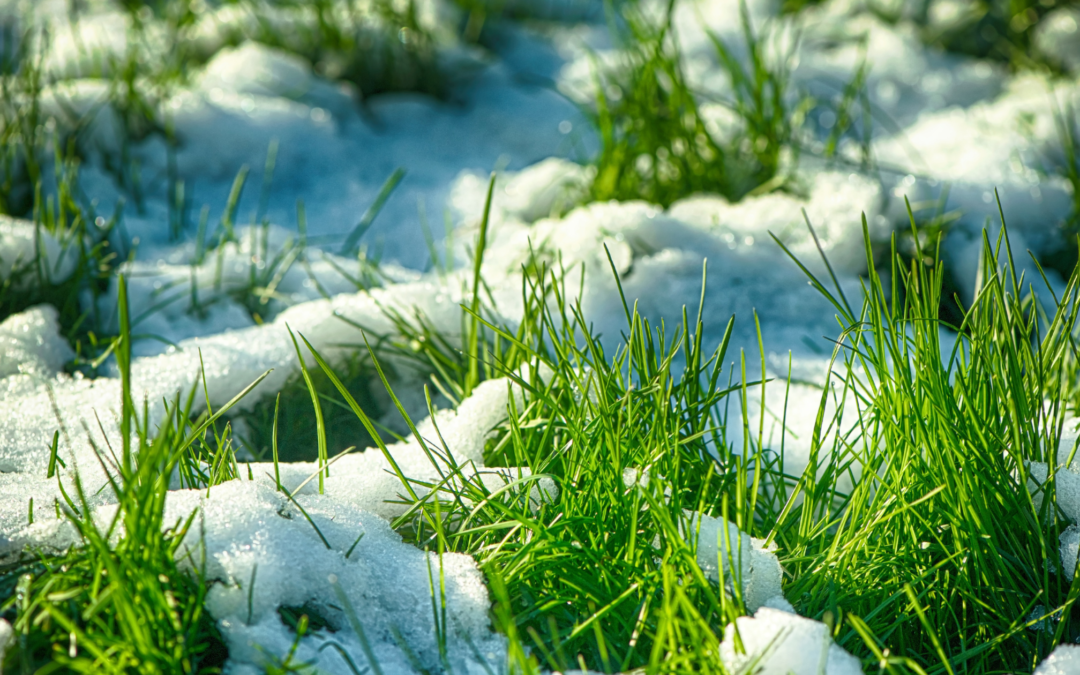June is prime time for lush, green lawns across Wisconsin. The combination of warm days, cooler nights, and occasional rain makes this one of the most active growing periods for cool-season grasses like Kentucky bluegrass, ryegrass, and fescue—all common in...

Creating a Lawn Care Schedule for the Midwest
As the Midwest transitions from winter to spring, homeowners eagerly await the return of lush, green lawns and vibrant landscapes. To achieve a beautiful and healthy lawn throughout the year, it’s essential to have a well-structured lawn care schedule. In this guide, we’ll provide you with a sample lawn care calendar starting in February, outlining seasonal tasks and maintenance tips to keep your lawn in top shape throughout the year.
February: Preparing for Spring
February may still feel like winter, but it’s the perfect time to start preparing your lawn for the upcoming growing season. Here’s what you should focus on:
- Snow Removal: Continue to remove snow from your driveway and walkways to prevent compacted snow and ice from damaging your grass.
- Winter Lawn Inspection: Assess your lawn for any signs of snow mold, ice damage, or animal tracks. Make a note of any problem areas that may need attention in the spring.
- Sharpen Lawnmower Blades: Take this opportunity to sharpen your lawnmower blades, ensuring a clean cut when it’s time to mow.
March: Early Spring Maintenance
As the weather begins to warm up, it’s time to kick-start your lawn care routine:
- Raking and Thatching: Remove any remaining leaves and thatch from your lawn to promote healthy grass growth.
- Soil Testing: Conduct a soil test to determine if your lawn requires any specific amendments, such as lime or fertilizer, to balance the pH and nutrient levels.
- First Mowing: Depending on the weather, you may need to give your lawn its first trim of the year. Ensure your lawnmower blade is set at the appropriate height.
April: Spring Awakening
April is when your lawn truly comes to life. Here’s what you should do:
- Fertilization: Apply a spring fertilizer to promote vigorous growth. Look for a balanced fertilizer with nitrogen, phosphorus, and potassium.
- Weed Control: Begin your weed control program by applying pre-emergent herbicides to prevent weed seeds from germinating.
- Overseeding: If your lawn has thin areas, consider overseeding with grass seed suitable for your region.
May: Embrace the Growing Season
As temperatures rise, your lawn will require more attention:
- Regular Mowing: Increase your mowing frequency to maintain the recommended grass height for your turf type.
- Watering: Ensure your lawn receives about 1 to 1.5 inches of water per week, either through rainfall or irrigation.
- Weed Management: Continue to monitor and address any weed issues as they arise.
June – August: Summer Maintenance
Summer is the peak growing season for your lawn:
- Mowing: Keep up with regular mowing and avoid cutting more than one-third of the grass height at a time.
- Watering: Adjust your watering schedule based on weather conditions, aiming for deep, infrequent watering to encourage deep root growth.
- Pest Control: Watch for signs of pests and address any issues promptly. Consider applying insecticides as needed.
September – October: Fall Preparations
As temperatures begin to cool down, shift your focus to fall lawn care:
- Aeration: Consider core aeration to improve soil compaction and allow nutrients and oxygen to reach the roots.
- Overseeding: Early fall is an ideal time for overseeding to thicken your lawn.
- Fertilization: Apply a fall fertilizer to support root growth and overall lawn health.
November – December: Winterization
As winter approaches, take steps to protect your lawn:
- Leaf Removal: Ensure your lawn is clear of leaves before snowfall to prevent suffocation and mold growth.
- Winterizing Equipment: Properly store and winterize your lawnmower and other lawn care equipment.
- Snow Removal: Keep your driveway and walkways clear of snow to prevent ice damage to your grass.
By following this lawn care schedule tailored to the Midwest, you’ll be well-prepared to enjoy a beautiful and healthy lawn throughout the year. Remember that local climate conditions can vary, so adapt your schedule as needed, and always consult with a lawn care professional for personalized guidance. With proper care and attention, your Midwest lawn will be the envy of the neighborhood.
If you need getting your lawn prepped from season to season, Friske Lawn Care would be happy to help! Give us a call at 608-445-5883 or shoot us an email at friskelawncare@gmail.com.
How Often Should You Mow in June? Lawn Growth Tips for Wisconsin Yards
What’s Bugging Your Lawn? Early Signs of Spring Pest Problems in Madison, WI
As the snow melts and the grass starts growing again, many Madison homeowners breathe a sigh of relief—spring is finally here. But as your lawn begins to wake up, so do some unwanted visitors. Grubs, ants, and other lawn-damaging pests start to emerge around late...
Is Spring Coming Early? What Warmer March Temperatures Mean for Your Lawn
Madison, WI, has been experiencing some warmer-than-usual temperatures this March, leaving many homeowners wondering if spring is arriving early this year. While an early warm-up can be exciting, it also brings unique challenges for lawn care. Grass may start growing...




Recent Comments